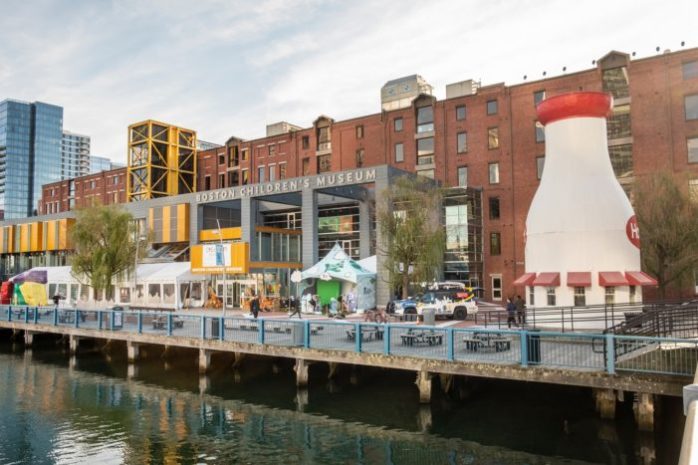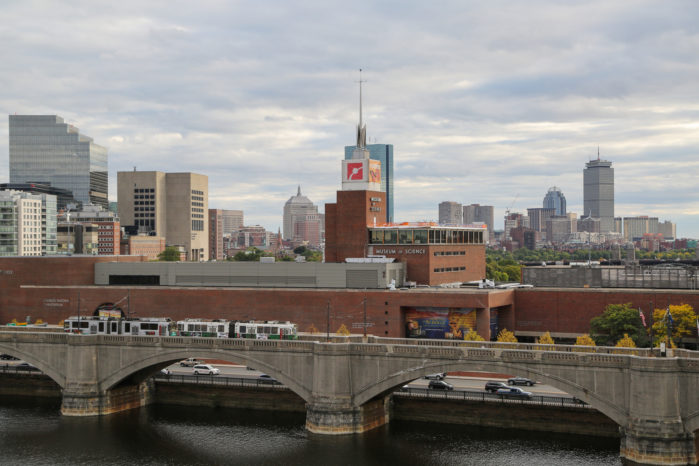
Even during a pandemic, in the Hub, it’s always time to be a tourist in your own city
When COVID first struck in early 2020, it felt as if Boston would become a desolate place with a near-total lack of tourists, college students, businesspeople, and the like, and there have indeed been times that did feel like you might see tumbleweeds blowing across Boylston Street and Comm Ave. But Boston is a resilient city, and its various landmarks, institutions, and countless businesses have done whatever it takes in order to remain welcoming to folks as safely as possible. What this means for newcomers and longtime residents alike is the fact that the city and the surrounding area now feel much like days past, but with some restrictions that people need to be aware of (and respect), and the places that make Boston so great all need our support now. No one really knows what the future will bring since the pandemic has not gone anywhere.
One of the most endearing things about Boston is its countless museums, including some of the best art museums you’ll find in the entire country. And some of the bigger art museums are doing their part in being as “open” as possible while also putting a major focus on safety. The Museum of Fine Arts (465 Huntington Ave) always needs to be at the top of any list of places to visit, as it is one of the largest art galleries in the world and features such a huge variety of exhibits that you’ll never get bored with the place. Currently, the MFA is requiring face masks both inside and out regardless of whether guests have been vaccinated, and while gallery activities are starting to return, most in-person tours and gallery activities remain closed, with virtual activities taking up the slack for the time being. The Isabella Gardner Museum (25 Evans Way) is another must-visit for art lovers, as it features some extraordinary collections from the United States, Europe, and Asia, and you’ll not only see wonderful paintings and sculptures, but also jewelry, textiles, furniture, textiles, books, and so much more. The Gardner is being cautious, requiring face coverings for all indoors, and is set up for timed entry only while communal spaces and interactive activities are shuttered for now. Across town, the Institute of Contemporary Art (25 Harbor Shore Drive) boasts a stunning seaside location while being known for its extensive modern art collection, and it’s not just about paintings, prints, and photography, as films, music, and videos are also part of what makes the ICA so great. Currently, the museum is doing timed tickets and limiting the number of guests, and face masks are required for everyone. In addition, the ICA has moved all printed materials and exhibition labels/text to digital platforms that can be accessed by mobile devices, and food/drink is not allowed inside.
It is no secret that the Boston area also has museums and other attractions that are kid-friendly, and they are taking the same types of precautions that the art museums are doing. One option that’s overwhelming in its variety of exhibits is the Museum of Science (1 Science Park), which features everything from dinosaurs to nanotechnology—and it even has a timely exhibit on vaccines these days. The MOS is open to all but is requiring that everyone 5 years of age and over wear a face covering, and the number of visitors allowed has been reduced to assure people’s safety, while timed tickets are required and QR codes are emailed to guests for contactless admission. If you’re interested in sea life, the New England Aquarium (1 Central Wharf) is the place to be, as you’ll get to see penguins, sea lions, turtles, octopus, and too many fish to name. NEAQ is requiring that all visitors over five years of age wear face masks, including in the Marine Mammal Center and the Simons Theatre. Timed ticketing is in effect and the facility has reduced capacity, and while most exhibits are open, some remain closed for now, including the Edge of the Sea touch tank. A short distance south of the aquarium and just across Fort Point Channel is the Children’s Museum (308 Congress St), which features lots of fun and interesting exhibits and events for kids of all ages, including making shadow puppets, taking a peek at a Japanese house, and creating comics. Much is being done to protect visitors here while still being as welcoming as possible, with all visitors aged two and over required to wear face coverings, though those who have medical issues should call to see if a reasonable accommodation can be provided, and all exhibits have reduced capacity with advanced registration and ticketing required.
As many already know, Boston is a huge sports town, which has posed some big challenges in the COVID era. But the parks, stadiums, and arenas are generally being pretty careful and using technology to help keep guests safe. Fenway Park is a legendary place that has been the site of much rejoicing (and heartbreak) over the years thanks to the Red Sox, and it is also home to the occasional live concert. It also has the advantage of being outdoors, but precautions are still being taken, including cashless payment options at all concessions and merchandise points of sale, hand sanitizer and wipes being found at entry gates and along the concourse, and tickets being sent digitally (no paper tickets are being issued). TD Garden is home of the Celtics and Bruins (and also has events such as concerts), and while a much newer structure than Fenway, both the new garden and the old garden have seen their share of memorable highlights. TD Garden has the disadvantage of being indoors, but masks are required for even fully vaccinated fans as well as those who work there. In addition, visitors are given a specific entry gate via email to give the most efficient path of travel, and they are asked to stay within their designated areas for the duration of the event. Finally, tickets are digital only, and the TD Garden app can be used to order food and drink for pickup at mobile pickup concession stands (Bruins gear can also be purchased in a similar manner as well).

One advantage that Boston has over so many other cities is that it’s easily walkable, which means that people can see some of the best sites all in one fell swoop, and much of it can be done outside. The Freedom Trail has always been one of the best ways to see the city’s history, and checking out such sites as Boston Common, the Granary and Copp’s Hill burying grounds, the Charlestown Navy Yard and USS Constitution, and the Bunker Hill Monument can be done without having to set foot inside a building. If you want to go into historic structures along the route such as the Old State House, Faneuil Hall, the Paul Revere House, and the Old South Meeting House, definitely bring a face mask, and there may be limited capacity, timed ticketing, and limited exhibits and programs, so don’t expect everything to be running normally for now. The Harborwalk is basically all outside and goes by some of Boston’s most interesting sites, including the aforementioned Navy Yard/USS Constitution, New England Aquarium, and ICA, while also including historic wharves such as Long Wharf, skirting the North End, going along Fort Point Channel, and passing the Boston Tea Party Ship and the Boston Fish Pier. If you want to see the city in as safe a way as possible, this—combined with parts of the Freedom Trail that do overlap the Harborwalk here and there—might be the way to do so. Plenty of other walking options can be found as well, including the Black Heritage Trail, which winds its way through the city’s charming Beacon Hill neighborhood and can be done as a self-guided outdoor walk, seeing various buildings and sites from the streets, or as a tour. The Museum of African American History (46 Joy St) is a centerpiece of the route, though people are only allowed inside the African Meeting House and Abiel Smith School for now and tickets are only done online, while the number of visitors has been reduced.
Live music was touched upon earlier, and many music/concert venues are doing their part in keeping people safe, including the iconic Symphony Hall (301 Mass Ave), which is traditionally home to the Boston Symphony Orchestra but is now focused on virtual video performances. A number of businesses are opting for outdoor music shows, including the beloved ONCE, which said farewell to its home on Highland Avenue in Somerville during the COVID outbreak but is now hosting outdoor events at Boynton Yards, a new development in another part of Somerville (101 South St). Countless other independent places for music are scattered across the area, but if you’re looking for a larger venue that attracts some of the biggest names in music, the Leader Bank Pavilion (290 Northern Ave) is a solid option for outdoor shows, with this Seaport District venue no longer doing emailed tickets or print tickets—instead being mobile entry only—while also strongly recommending that all guests who are not fully vaccinated wear face coverings.

A lot of restaurants and bars have shut down since the coronavirus first reared its ugly head in February and March of 2020, but the dire predictions of half or more dining and drinking spots closing permanently have fortunately not come true. The places that remain open are hurting, though, in part because of the nature of the business where you have to remove your mask to eat or drink while close contact between workers and guests is unavoidable unless doing takeout or delivery. Outdoor dining has greatly helped during the pandemic, but not all spots have room for patios or decks, and because dining al fresco is weather-dependent, a stretch of rainy weather, hot or humid days, and the like can be devastating. There are many beloved restaurants and bars in and around Boston that have made it through what is hopefully the worst of the crisis, including J.J. Foley’s (a beloved old watering hole in the South End that is a favorite among people who yearn for the “old” Boston), Neptune Oyster (a North End institution for seafood and more, including one of the best lobster rolls in the region), Santarpio’s (an East Boston pizzeria that is a longtime local favorite and is always full of interesting characters), and Villa Mexico (a friendly Mexican eatery in the heart of the downtown area that has some of the best salsa you’ll ever try), but many are limping along because very few spots are seeing 100% capacity these days, at least on a regular basis.
Businesses and attractions of all sizes in Boston have obviously been hit hard by COVID, but the city and the surrounding area seem to have weathered the storm all right for the most part, at least so far. With the highly contagious delta variant now firmly in place, however, there is no telling what might happen over the coming weeks and months, so it’s imperative to support local spots, be it museums, historic sites, sports and music venues, restaurants and bars, or so much more. So get out and enjoy everything that Boston has to offer, in as safe a manner as possible.
Marc is the founder of @hiddenboston, a textbook editor, a hike leader for @AppMtnClub, and a food and travel writer and commenter for DigBoston, NBC/NECN, WBZ, WMFO and indie617.

